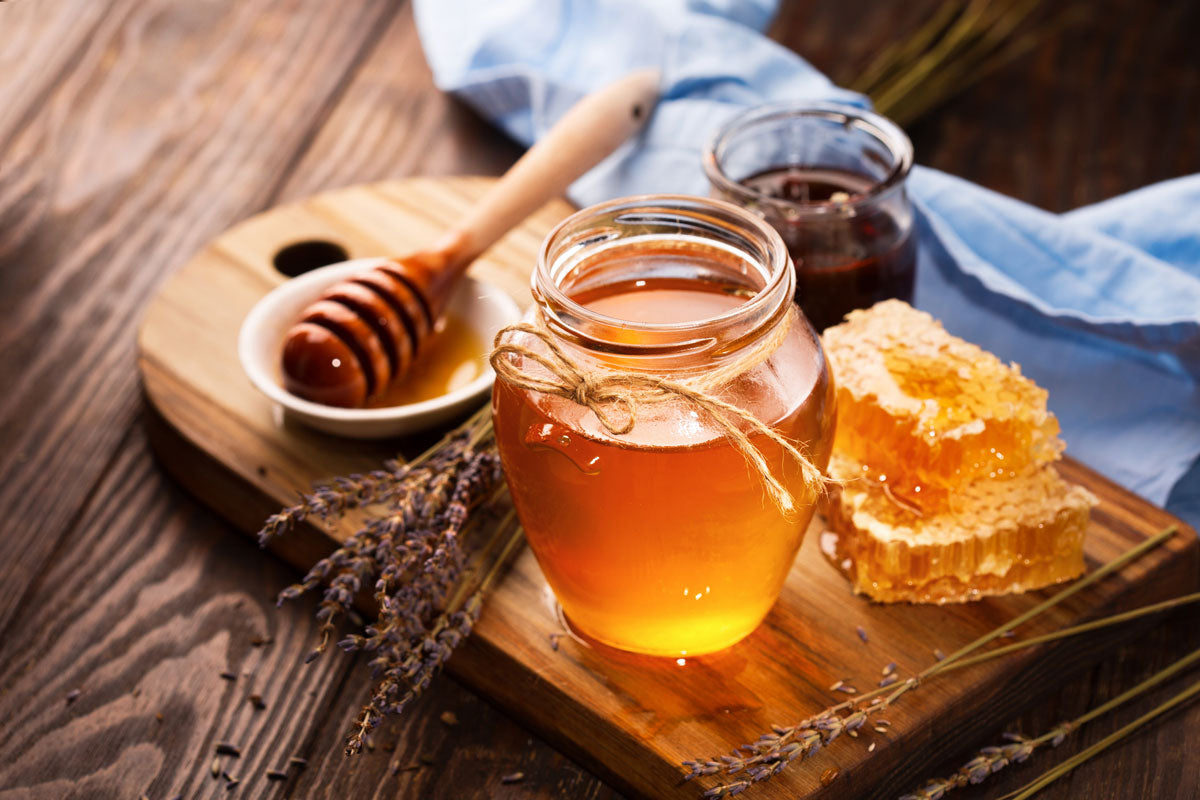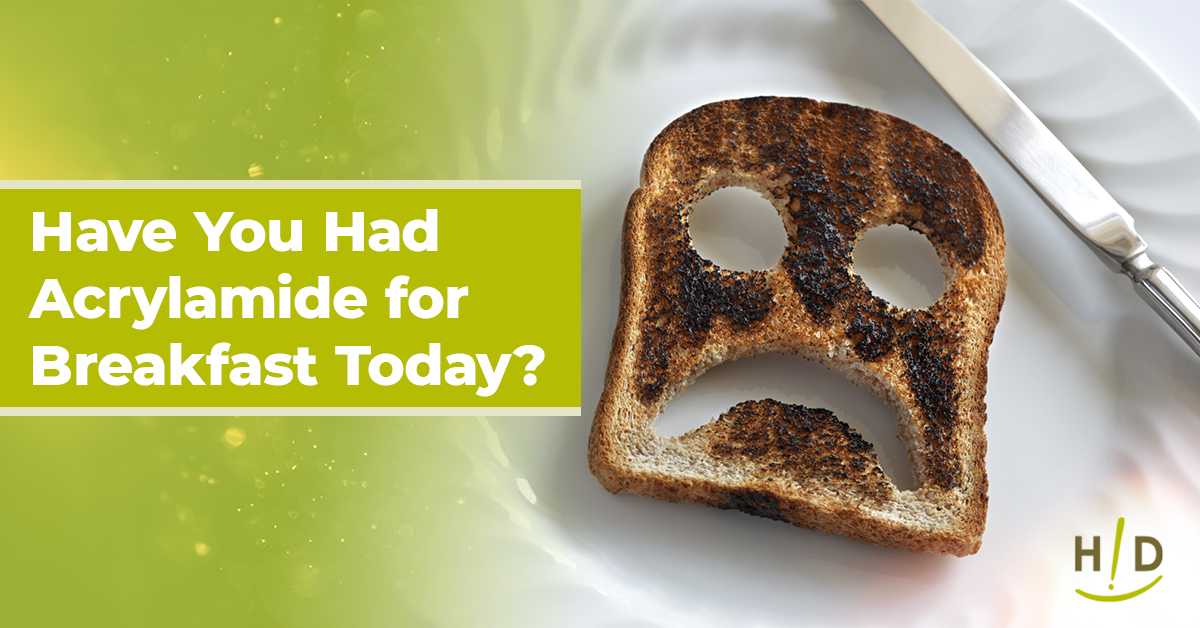by Dr. Michael Donaldson, PhD
Honey—a delicious natural sweetener. Who doesn’t like honey? Sure, it is sweet, but there is more to natural honey than meets the eye. Honey contains some minor components that give it some surprising health benefits. Everything from wound healing, to antibacterial effects, to promoting good gut health, and even helping a little bit with serious chronic diseases like cancer.
A recent review of the bee products honey, propolis and royal jelly highlighted many of the health benefits of honey. The highlights of honey’s benefits are taken from this article.1
As it states in the referenced article, “Natural honey is composed of 82.4% carbohydrates, 38.5% fructose, 31% glucose, 12.9% other sugars, 17.1% water, 0.5% protein, organic acids, multiminerals, amino acids, vitamins, phenols, and a myriad of other minor compounds. In addition, honey consists of minor amounts of bioactive components, including phenolic acid, flavonoid, and α-tocopherol. Honey constituents with health benefits include phenolic acids, flavonoids, ascorbic acid, proteins, carotenoids, and certain enzymes, such as glucose oxidase and catalase.”
The exact composition of the minor components varies with locality of the honey and probably the kind of bee making the honey. Some of these components are sensitive to heat, so it is best to find raw honey if you want all its health benefits.
Honey is used for dressing wounds. In a randomized trial of 50 burn victims, honey dressing worked better than a silver sulfadiazine dressing. After 7 and 21 days the researchers found that skin grew back faster, acute inflammation decreased faster and there was better control of infection using the honey dressing.2
Not all leg ulcers heal well; they can be painful and can stink when they don’t heal. After not healing for at least 12 weeks, patients were given Medihoney dressings, along with usual care. During the next 12 weeks of care wounds healed well, became less odorous and less painful. Patient satisfaction was high with the Medihoney treatment.3
Honey can be beneficial for gastrointestinal health. In vitro studies have shown effective antimicrobial activity against Escherichia coli, Campylobacter jejuni, Salmonella enterocolitis and Shigella dysenteriae, all known to cause diarrhea.4 Honey can stimulate the growth of Bifidobacteria much like inulin and fructooligosaccharides, making it a bona fide prebiotic.5 Honey was also shown to stimulate lactobacillus growth in rats. 6
Honey can be good for oral health as well. An in vitro study found honey had antibacterial properties against P. gingivalis, a microbe that contributes to gingivitis.7 It probably has some benefits against other potentially pathogenic bacteria that hang out in the mouth.
Upper respiratory infections can cause children to cough at night, disturbing their sleep and their parents (the ones reading this). In a randomized trial of 139 children a 2.5 ml (1/2 teaspoon) of honey before bed did more for suppressing nighttime cough than two common drugs dextromethorphan (DM) and diphenhydramine (DPH), neither of which are a good option for young children.8
Gastroenteritis or stomach flu, can cause vomiting and diarrhea, especially dangerous in infants and toddlers. In a randomized trial oral rehydration solution was made with either glucose or honey and given to 100 suffering children. The honey solution worked better than the control for reducing vomiting and diarrhea and getting the children to feeling normal again.9
Pretreatment of Wistar Albino rats with Sundarban honey (from Bangladesh) prevented them from the symptoms of a chemically induced heart attack. Their levels of antioxidant enzymes were near normal levels and microscopic examination of their heart tissue showed little damage.10
Honey has also demonstrated some anti-cancer activity, reviewed by Erejuwa and coworkers in 2014.11 The anticancer effects of honey have been studied more thoroughly in breast, liver and colorectal cancer cells along with more limited data in other cancer cells including prostate, bladder, endometrial, kidney, skin, cervical, oral and bone cancer cells.
So, I guess there is more to honey than I thought. It doesn’t replace fruits or vegetables in your diet, but it does have some positive health benefits. Yes, it is more expensive than it used to be, and more expensive than other sweeteners as well. But you usually get what you pay for, so consider your choices of sweeteners carefully. You don’t need much, but when you do, consider grabbing the honey jar.References
- Pasupuleti VR, Sammugam L, Ramesh N, Gan SH (2017) Honey, Propolis, and Royal Jelly: A Comprehensive Review of Their Biological Actions and Health Benefits. Oxid Med Cell Longev 2017:1259510. https://doi.org/10.1155/2017/1259510
- Subrahmanyam M (1998) A prospective randomised clinical and histological study of superficial burn wound healing with honey and silver sulfadiazine. Burns 24:157–161. https://doi.org/10.1016/S0305-4179(97)00113-7
- Dunford CE, Hanano R (2004) Acceptability to patients of a honey dressing for non-healing venous leg ulcers. J Wound Care 13:193–197. https://doi.org/10.12968/jowc.2004.13.5.26614
- Adebolu TT (2005) Effect of natural honey on local isolates of diarrhea-causing bacteria in southwestern Nigeria. Afr J Biotechnol 4:1172–1174. https://doi.org/10.5897/AJB2005.000-3233
- KAJIWARA S, GANDHI H, USTUNOL Z (2002) Effect of Honey on the Growth of and Acid Production by Human Intestinal Bifidobacterium spp.: An In Vitro Comparison with Commercial Oligosaccharides and Inulin. J Food Prot 65:214–218. https://doi.org/10.4315/0362-028X-65.1.214
- Shamala T r., Shri Jyothi Y, Saibaba P (2000) Stimulatory effect of honey on multiplication of lactic acid bacteria under in vitro and in vivo conditions. Lett Appl Microbiol 30:453–455. https://doi.org/10.1046/j.1472-765x.2000.00746.x
- Eick S, Schäfer G, Kwieciński J, Atrott J, Henle T, et al (2014) Honey – a potential agent against Porphyromonas gingivalis: an in vitro study. BMC Oral Health 14:24. https://doi.org/10.1186/1472-6831-14-24
- Shadkam MN, Mozaffari-Khosravi H, Mozayan MR (2010) A Comparison of the Effect of Honey, Dextromethorphan, and Diphenhydramine on Nightly Cough and Sleep Quality in Children and Their Parents. J Altern Complement Med 16:787–793. https://doi.org/10.1089/acm.2009.0311
- Abdulrhman MA, Mekawy MA, Awadalla MM, Mohamed AH (2010) Bee Honey Added to the Oral Rehydration Solution in Treatment of Gastroenteritis in Infants and Children. J Med Food 13:605–609. https://doi.org/10.1089/jmf.2009.0075
- Hindawi (2016) Sundarban Honey Confers Protection against Isoproterenol-Induced Myocardial Infarction in Wistar Rats. https://www.hindawi.com/journals/bmri/2016/6437641/. Accessed 16 Sep 2022
- Erejuwa OO, Sulaiman SA, Wahab MSA (2014) Effects of Honey and Its Mechanisms of Action on the Development and Progression of Cancer. Molecules 19:2497–2522. https://doi.org/10.3390/molecules19022497








